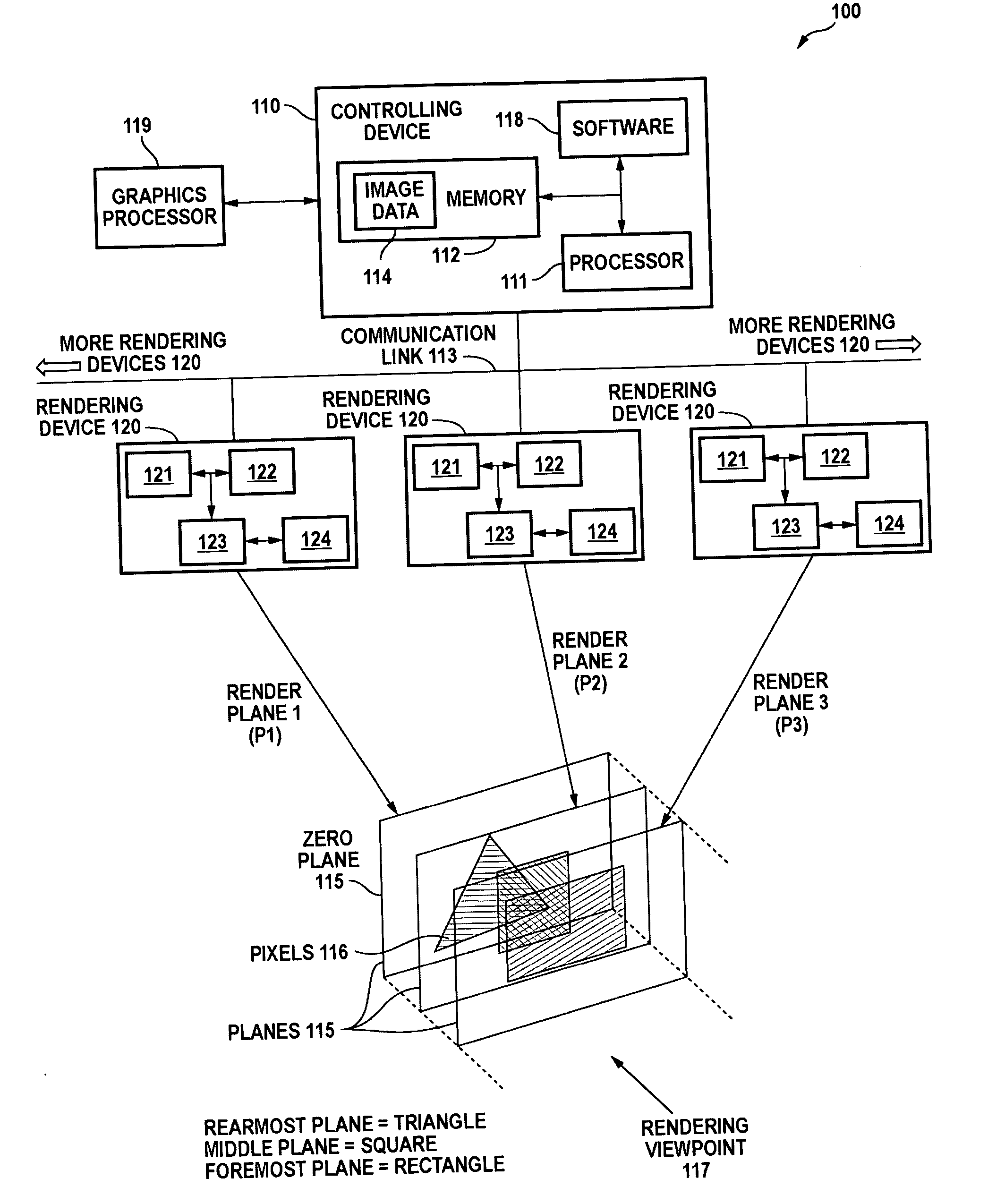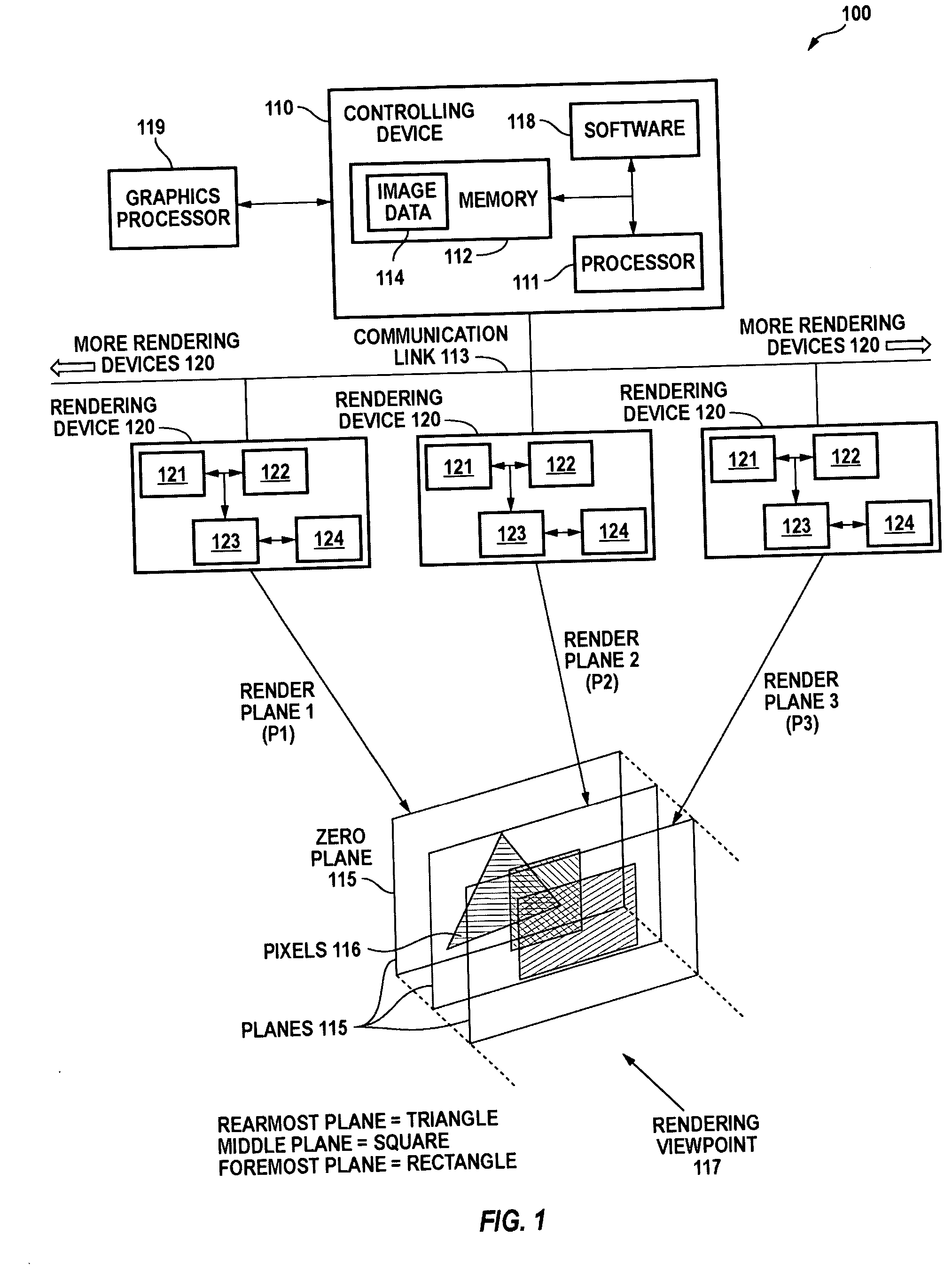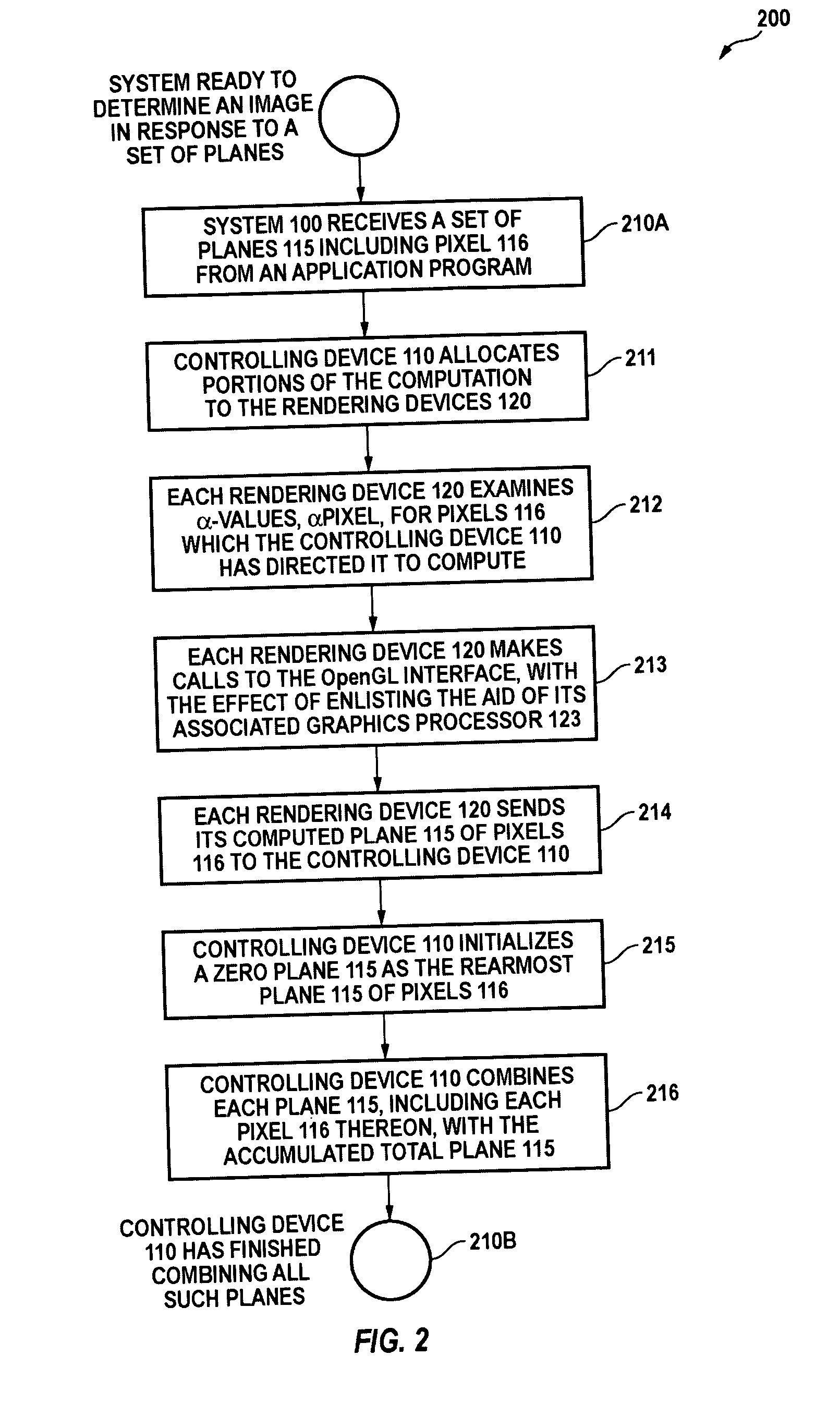Transparency-conserving method to generate and blend images
- Summary
- Abstract
- Description
- Claims
- Application Information
AI Technical Summary
Benefits of technology
Problems solved by technology
Method used
Image
Examples
Embodiment Construction
[0040] The description includes a preferred embodiment of the invention, including preferred process steps and data structures. Those skilled in the art would realize, after perusal of this application, that embodiments of the invention might be implemented using a variety of other techniques not specifically described, without undue experimentation or further invention, and that such other techniques would be within the scope and spirit of the invention.
DEFINITIONS
[0041] The general meaning of each of these following terms is intended to be illustrative and in no way limiting. [0042] The phrases (1) “controlling device” and (2) “rendering device”, and the like, refer respectively to devices for (1) controlling the allocation of rendering commands, and (2) actually rendering 3D scenes and 2D images of those 3D scenes from a selected perspective, as further described below. [0043] In one embodiment, there is a single controlling device and as many rendering devices as necessary so ...
PUM
 Login to View More
Login to View More Abstract
Description
Claims
Application Information
 Login to View More
Login to View More - R&D
- Intellectual Property
- Life Sciences
- Materials
- Tech Scout
- Unparalleled Data Quality
- Higher Quality Content
- 60% Fewer Hallucinations
Browse by: Latest US Patents, China's latest patents, Technical Efficacy Thesaurus, Application Domain, Technology Topic, Popular Technical Reports.
© 2025 PatSnap. All rights reserved.Legal|Privacy policy|Modern Slavery Act Transparency Statement|Sitemap|About US| Contact US: help@patsnap.com



